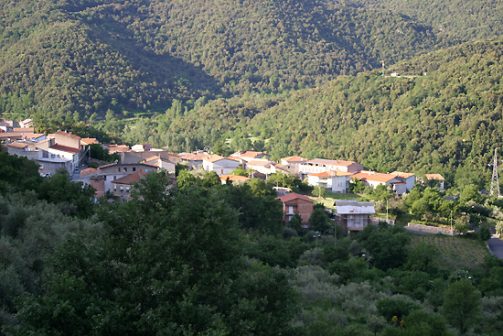An outpost of ancient Barbaria, Tiana has been a borderland and land of exchange between different cultures that have shared knowledge and traditions passed down through the centuries here.
Of the civilizations that passed over its territories, traces remain in the archaeological monuments scattered throughout the surrounding area: the important necropolis of Mancos, consisting of as many as 7 domus de Janas, dates back to the Neolithic period, while the remains of ancient nuragic villages in the localities of Sa Pira Era, Sa Tanca de su Pranu and S’ischisorgiu date back to the Bronze Age.
From ancient sources we know that during the Roman conquest Sardinia was divided into two large zones: the Romània, which corresponded to the Romanized territories, and the Barbària, where communities lived that, although they had contact with the settlers, retained their customs. In fact, among the Barbaricini still in the 7th century AD the rites of the pagan religion continued to be practiced, while in the rest of the island Christianity had spread. Northwest of the present municipal boundaries, the Romans had built the important road that passed through the two nearby centers of Forum Augusti (today Austis) and Sorabile(mansio in the countryside of Fonni). Evidence of the Roman presence is also found in the localities of Santu Leo and Tudulu; in the latter the remains of a kiln of the period for firing tiles and bricks can be seen.
The town’s name first appears in church registers of the 11th and 12th centuries, as a surname indicating the origin of a certain Petru de Tian. In the Middle Ages the villa of Tiana was part of the Giudicato of Arborea. At the end of the 13th century, Pope Boniface VIII enfeoffed the Kingdom of Sardinia and Corsica to the Crown of Aragon, causing the outbreak of the great war in the 14th century between Judge Mariano IV of Arborea and King Peter the Ceremonious of Aragon. The Tianese also had to participate in the battles of those years.
The war for the island’s independence continued with the successors of the House of Arborea: the last to rekindle the conflict was the Marquis of Oristano Leonardo Alagon, who was finally defeated by the Catalan-Aragonese power at the Battle of Macomer in 1478. From 1504 the village was enfeoffed to Matteo Arbosich and over the centuries belonged to the De Sena and Cervellon families. After the passage of the Island to the Savoys, who maintained the feudal regime, in 1718 Tiana was entrusted to the Manca Guiso and finally to the Amat, from whom it was redeemed in 1838 with the payment of the compensation of 625,000 liras as provided by the law for the abolition of the feud.
The village became famous for the manufacture of orbace, a typical woolen fabric from which various elements of traditional clothing are still made today.
Source: Autumn in Barbagia – Tiana


